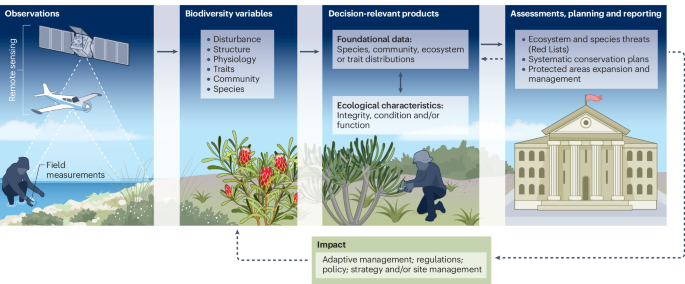-
Trump’s science advisers: how they could influence his second presidency

Michael Kratsios (left) was chief technology officer during the first US presidency of Donald Trump (right).Credit: PBH Images/Alamy For almost half of Donald Trump’s first US presidency, which ran from 2017 to 2021, he did not have an official science adviser. His second term is shaping up to be different. As he prepares to take…
-
Making the International Year of Quantum Science and Technology happen
The UN has proclaimed 2025 an international year to celebrate quantum science. Yanne Chembo and Joe Niemela, two of the physicists involved in the proposal, share the story of the approval process for this initiative. This is a preview of subscription content, access via your institution Access options Access through your institution Change institution Buy…
-
Making the International Year of Quantum Science and Technology happen
The UN has proclaimed 2025 an international year to celebrate quantum science. Yanne Chembo and Joe Niemela, two of the physicists involved in the proposal, share the story of the approval process for this initiative. This is a preview of subscription content, access via your institution Access options Access through your institution Change institution Buy…
-
45 Strange Bits of Science That’ll Make You Wonder If Mother Nature Is Just Screwing With Us

Calling nature “unnatural” is a massive oxymoron, but we really don’t know what else to call its more peculiar happenings. It’s probably our own beefed-up egos telling us that the way we experience the world around us is “normal.” Things like the quantum realm, distant space, the deep sea and all those creepy, slimy little…
-
BioSCape combines local knowledge and remote-sensing technology for inclusive biodiversity science

The Biodiversity Survey of the Cape (BioSCape) in South Africa’s Greater Cape Floristic Region aims to test the limits and potential of remote sensing for biodiversity applications. Integrating field biodiversity measurements and local knowledge with advanced remote sensing, BioSCape brings us closer to measuring key biodiversity variables globally from space. Download PDF Addressing biodiversity loss,…
-
What Trump 2.0 means for science: the likely winners and losers

As Donald Trump prepares for his second term as president of the United States, two starkly different outlooks are emerging among scientists and engineers. Some technology companies, space enthusiasts, artificial intelligence (AI) developers and others expect favourable policies for their fields in the coming years, and are hugely excited about the possibilities for exploration and…
-
What Trump 2.0 means for science: the likely winners and losers

As Donald Trump prepares for his second term as president of the United States, two starkly different outlooks are emerging among scientists and engineers. Some technology companies, space enthusiasts, artificial intelligence (AI) developers and others expect favourable policies for their fields in the coming years, and are hugely excited about the possibilities for exploration and…
-
Dear Donald Trump: A letter from Nature on how to make science thrive

Donald Trump was inaugurated as 45th President of the United States on 20 January 2017.Credit: Win McNamee/Getty Dear Mr President-elect, On 20 January, you will be sworn in as the 47th President of the United States. Congratulations on your win. A majority of US voters have placed their trust in you. That is a tremendous…
-
Nature Materials
Issue cover: Image: Zihe Liang and Qingkun Liu, Shanghai Jiao Tong University; Itai Cohen, Cornell University. Cover design: Alex Whitworth Nature Materials (Nat. Mater.) ISSN 1476-4660 (online) ISSN 1476-1122 (print)
-
Parachute science and collaboration in protected areas
Organizations that manage protected areas often lack scientists to conduct research and inform management. The resulting involvement of external scientists from international universities, nongovernmental organizations or other research organizations has raised concerns that some protected area research might not reflect local priorities or engage with local researchers — a phenomenon termed parachute science. Writing in the Journal…